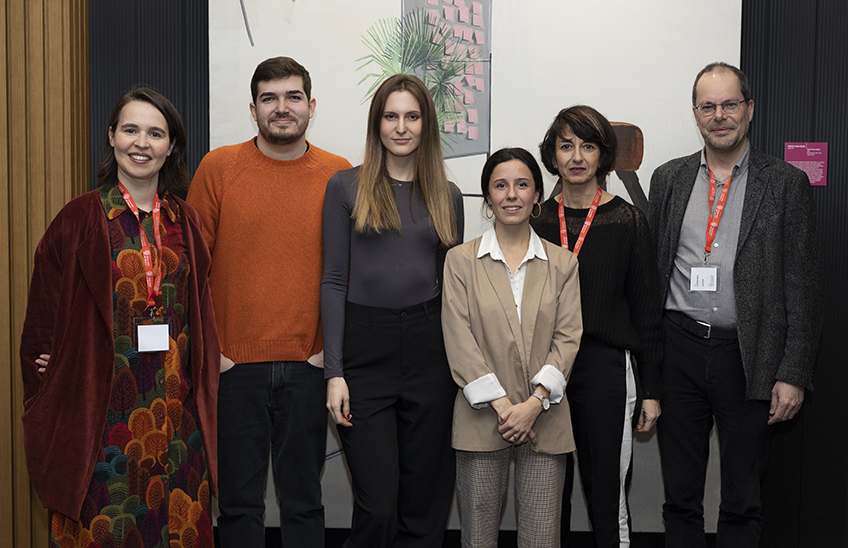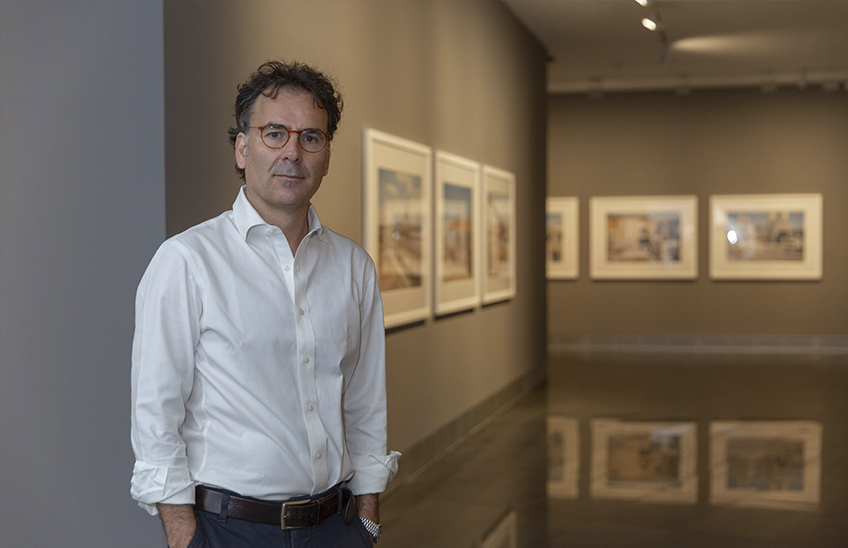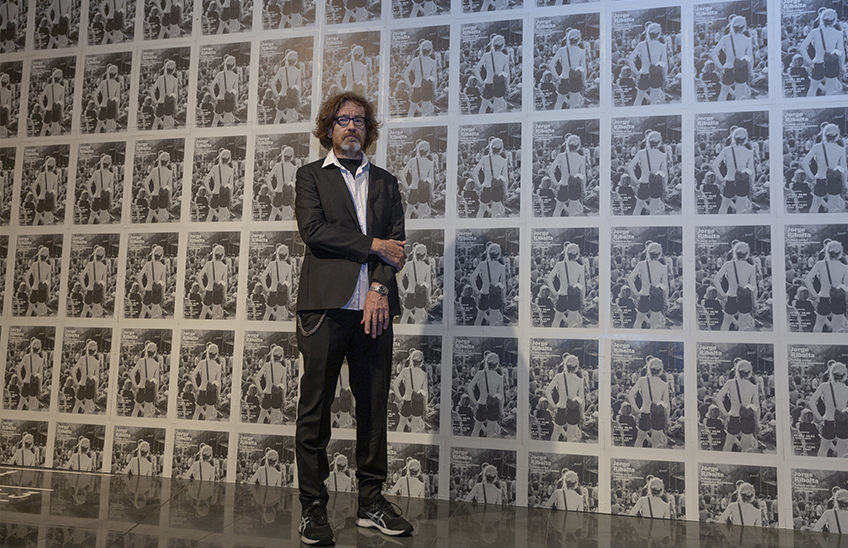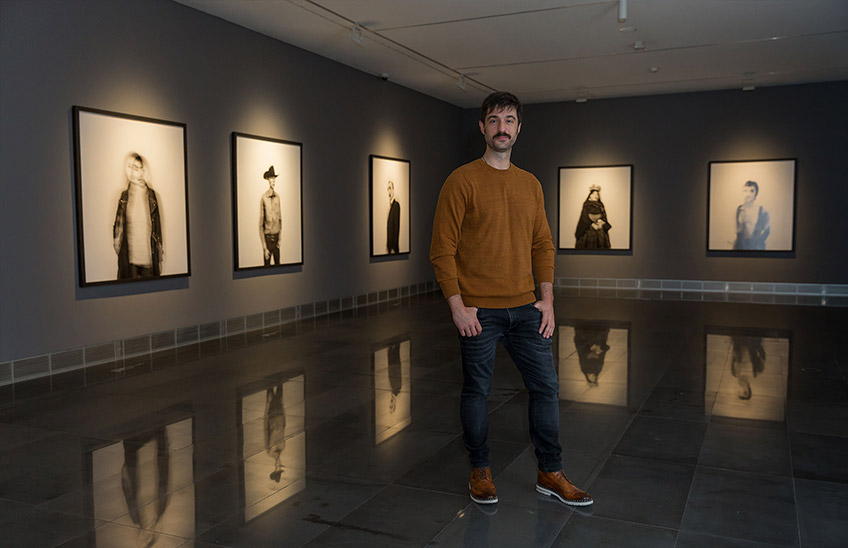The graduates of Master's Degree in programs of study of Curatorship Imma Blanch and Eva del Llano will curate the renovation of the Espacio Ortiz Echagüe.
The space sample the artistic and documentary look of the bequest of José Ortiz Echagüe, one of the main Spanish photographers of the 20th century, belonging to the Museum's Collection

FotoManuelCastells/Curators Eva del Llano and Imma Blanch, graduates of Master's Degree at programs of study Curatorship, at the MUN's Espacio Ortiz Echagüe.
21 | 04 | 2023
From April 20 you can visit the renovation of Espacio Ortiz Echagüe, curated by Imma Blach and Eva del Llano, graduates of the fourth promotion of the Master's Degree at programs of study of Curatorship of the Museum. The scholarship in the area of Collection and Exhibitions has given them the opportunity to create a new proposal for this space. Its reopening sample the artistic and documentary look of the bequest of José Ortiz Echagüe, one of the main Spanish photographers of the 20th century, belonging to the Museum's Collection. In its proposal, they show three new pieces from the collection and add their point of view.
"Ortiz Echagüe's work provides a different view within the framework of the Museum's Photographic Collection," says del Llano. Blanch emphasizes that "the artist contributed a very rich vision of Spanish culture and customs". Both distinguish and value his documentary work, always bathed in an artistic vision. This aspect is reflected in the different series he developed: Types and Costumes of Spain, Towns and Landscapes, Castles and Alcazars, Mystical Spain and North Africa.
In this sense, the renovation of the space focuses on showing Ortiz Echagüe's beginnings in photography, paying special attention to his artistic process and the techniques he used. It also includes family photographs and a selection of his series. Among them, source mora, Gitanos del Albaicín and Riña en el era. Blanch adds that "they show the different views of Ortiz Echagüe in the chosen pieces. On the one hand, the documentary, present in the portraits and everyday scenes and, on the other hand, the artistic one that characterizes him so much". In this sense, his companion explains that they remain in the framework of a biographical sample , so that visitors can have a vision of his life and work. But trying to emphasize that double vision. Always in line with this documentary and artistic view, Blanch affirms that "the intention was to try to make this double vision visible throughout his career. That was the complexity that we saw in Ortiz Echagüe's work, the work of documenting the reality of a time, but always with an aesthetic vision, present in the later retouching and the care of the framing.
The curators affirm that "the biggest challenge was to define the speech of the exhibition and to arrange it in the space". Blanch values that "their time at Master's Degree in programs of study of Curatorship has helped them to know which are the steps to follow". Del Llano adds that "thanks to this opportunity they have been able to put everything they have learned on internship ". They also point out that subject Art and Space has helped them a lot to think about the arrangement of the works and to keep the visitor in mind.
Likewise, del Llano emphasizes that their experience at the Museum's Collection and Exhibitions area "has been very enriching, as they have had the opportunity to learn about the dynamics and get involved in the different activities that take place at department". Blanch, for his part, appreciates that "they have learned to know what aspects are developed around this profession". And she says she has discovered that the curatorial field will be part of her professional career. Following their work in this department, they exhibit a representative selection of Ortiz Echagüe's production, providing a new vision of his work.




